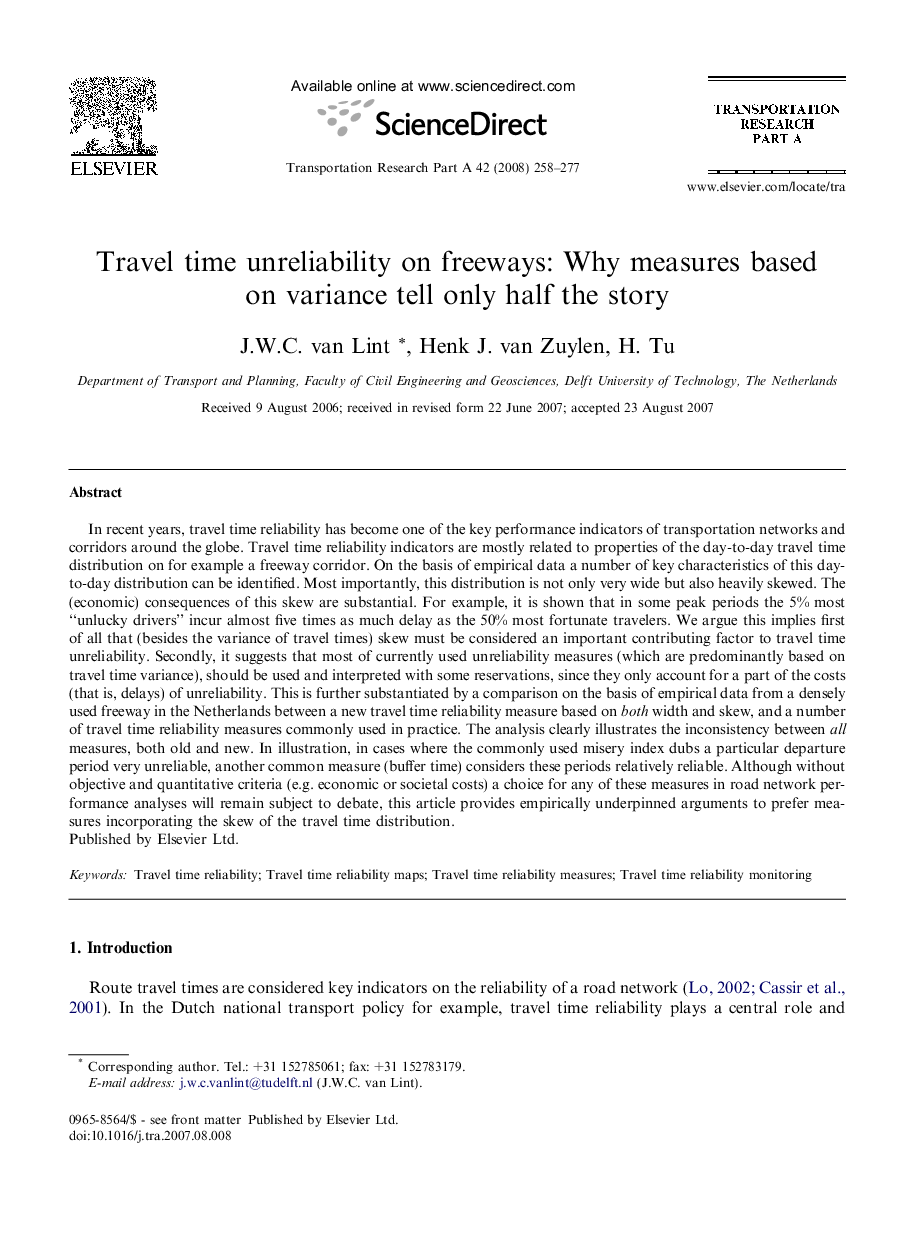| کد مقاله | کد نشریه | سال انتشار | مقاله انگلیسی | نسخه تمام متن |
|---|---|---|---|---|
| 311191 | 533594 | 2008 | 20 صفحه PDF | دانلود رایگان |

In recent years, travel time reliability has become one of the key performance indicators of transportation networks and corridors around the globe. Travel time reliability indicators are mostly related to properties of the day-to-day travel time distribution on for example a freeway corridor. On the basis of empirical data a number of key characteristics of this day-to-day distribution can be identified. Most importantly, this distribution is not only very wide but also heavily skewed. The (economic) consequences of this skew are substantial. For example, it is shown that in some peak periods the 5% most “unlucky drivers” incur almost five times as much delay as the 50% most fortunate travelers. We argue this implies first of all that (besides the variance of travel times) skew must be considered an important contributing factor to travel time unreliability. Secondly, it suggests that most of currently used unreliability measures (which are predominantly based on travel time variance), should be used and interpreted with some reservations, since they only account for a part of the costs (that is, delays) of unreliability. This is further substantiated by a comparison on the basis of empirical data from a densely used freeway in the Netherlands between a new travel time reliability measure based on both width and skew, and a number of travel time reliability measures commonly used in practice. The analysis clearly illustrates the inconsistency between all measures, both old and new. In illustration, in cases where the commonly used misery index dubs a particular departure period very unreliable, another common measure (buffer time) considers these periods relatively reliable. Although without objective and quantitative criteria (e.g. economic or societal costs) a choice for any of these measures in road network performance analyses will remain subject to debate, this article provides empirically underpinned arguments to prefer measures incorporating the skew of the travel time distribution.
Journal: Transportation Research Part A: Policy and Practice - Volume 42, Issue 1, January 2008, Pages 258–277